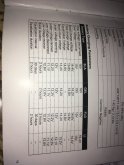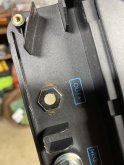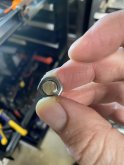What battery voltage (stabilized) did you discharge the battery to ? A yellow service battery indicator battery light is described as "battery voltage normal". A red service battery indicator light ON description is "battery under voltage". Red slow flashing indicated "battery over discharged".
I think you should discharge the battery until the service battery indicator is solid ON red (not flashing). Then try the the alternator charge or solar charge or both. If you are nervous while doing this, monitor the service battery voltage during the discharge with a DVM, insure the voltage does not drop below 12.0v (9% SOC).
If you have been living with lead acid battery performance for years, its hard to get past the idea(fact) that LiFePO4 batteries do not need to be charged to 100% state of charge every cycle or maintained at 100% SOC between charges. They will live longer if you run them at 80% - 20% SOC most of their life. LiFePO4 batteries also hold their charge at the same voltage for a long time if not loaded. Once the battery has 'settled' after charging, if all loads are removed from the battery, the settled voltage should not change much in a weeks time.
LiFePO4 batteries can be charged at 14.4 volts, but will settle to 13.6 volts fairly quickly after being charged to 100% SOC and the charging is stopped. If not loaded, they will maintain 13.6 for a long time.









